You are using an out of date browser. It may not display this or other websites correctly.
You should upgrade or use an alternative browser.
You should upgrade or use an alternative browser.
At Home In The Woods
- Thread starter Obed
- Start date
/ At Home In The Woods
#5,661
Coyote machine
Super Member
- Joined
- May 4, 2009
- Messages
- 7,660
- Location
- Southern VT
- Tractor
- 22 SANY SY 50U, '10 Kioti DK 40se/hst KL-401 FEL, loaded tires, KB-2485 bhoe, Tuffline TB160 BB, Woods QA forks, MIE Hydraulic bhoe thumb & ripper tooth, Igland 4001 winch, & GR-20 Log Grapple. Woods BBX72" Brush Mower. Diamondplate aluminum canopy
Don't know if I mentioned this already, but when you get a blade nut removed like on your 3 blade deck, wire wheel the threads clean, and put some copper based anti-seize on the threads to keep them from rusting, and to allow them to be removed without the 4' cheater bar. With that long a bar, if something won't give it's going to break, and in the case of a mower blade bolt that would make for a much bigger problem.
If I were you I'd get a big enough compressor to drive an impact wrench, which would also allow you to get other impact tools, like air driven cut off wheel, air chisel, air drill, etc., all of which are very useful tools to have for a DIYer or shady tree mechanic. HA!:laughing: Get it?, shady tree mechanic, HA!:confused2:
Seriously, a good compressor also allows you to spray paint. Battery or corded impact tools, not so versatile as what the compressor would provide for a long time.
My probable approach to your tight blade bolts would likely be: spray with penetrating oil, smack the head of the bolt with a metal faced dead blow hammer then use an impact wrench or impact socket with breaker bar and possibly a shorter cheater, 1 or 2' long. No success use heat wrench and smack it again, the same, air or breaker/cheater, until it gives. Then clean threads, anti-seize and tighten to torque spec for the bolt or until real snug + 1/4-1/2 turn. Note, anything applied to the bolt threads other than dry threads affects torque outcome. So with anti-seize on the threads you would want to decrease the torque enough to not over tighten the bolts.
If I were you I'd get a big enough compressor to drive an impact wrench, which would also allow you to get other impact tools, like air driven cut off wheel, air chisel, air drill, etc., all of which are very useful tools to have for a DIYer or shady tree mechanic. HA!:laughing: Get it?, shady tree mechanic, HA!:confused2:
Seriously, a good compressor also allows you to spray paint. Battery or corded impact tools, not so versatile as what the compressor would provide for a long time.
My probable approach to your tight blade bolts would likely be: spray with penetrating oil, smack the head of the bolt with a metal faced dead blow hammer then use an impact wrench or impact socket with breaker bar and possibly a shorter cheater, 1 or 2' long. No success use heat wrench and smack it again, the same, air or breaker/cheater, until it gives. Then clean threads, anti-seize and tighten to torque spec for the bolt or until real snug + 1/4-1/2 turn. Note, anything applied to the bolt threads other than dry threads affects torque outcome. So with anti-seize on the threads you would want to decrease the torque enough to not over tighten the bolts.
Obed
Elite Member
Funny!Very thorough coyote! You forgot to tell one important detail!!!! Turn the motor off!!! Today you can't be too careful! Lol
Obed
Elite Member
Saplings were growing on my septic drain field. I spent a day clearing them with my 14" Poulan chainsaw. My drain field is below the house in the woods. The excavator cut 3 paths through trees and installed the drain field. The saplings have had about 5 years to grow.
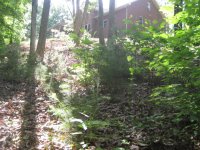
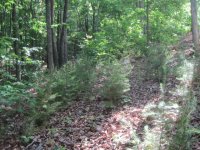
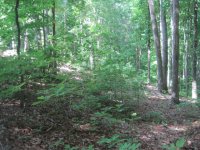
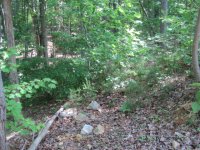
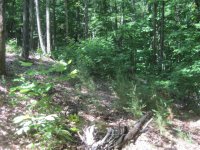
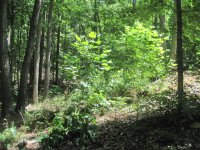
This monster grew 30 feet high in 5 years. I call it an Elephant tree; I don't know the real name.
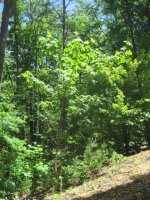
Here's what the drain field looked like when I got done.
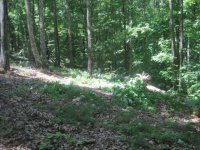
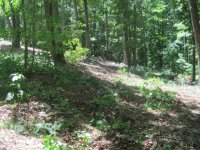






This monster grew 30 feet high in 5 years. I call it an Elephant tree; I don't know the real name.

Here's what the drain field looked like when I got done.


breadtrk
Platinum Member
Obed,
Did you just cut them down or use some kind of brush grabber and pull them out? The only way to really protect your system is to pull them out roots and all. Those trees may only sprout an inch above ground, know that those roots are still crawling in those lines feet at a time.
Did you just cut them down or use some kind of brush grabber and pull them out? The only way to really protect your system is to pull them out roots and all. Those trees may only sprout an inch above ground, know that those roots are still crawling in those lines feet at a time.
Tough Luck
New member
- Joined
- Jun 6, 2011
- Messages
- 21
- Tractor
- Kubota L3800
The tree you call 'Elephant' is most likely a Tulip Poplar. Very fast growing and common in East Tn. I have several on my place over 100 ft tall.
PhysAssist
Elite Member
- Joined
- Aug 22, 2011
- Messages
- 2,635
- Tractor
- Kubota B2320
The tree you call 'Elephant' is most likely a Tulip Poplar. Very fast growing and common in East Tn. I have several on my place over 100 ft tall.
That is what I was thinking too, but I wasn't sure enough to step in- we have a few of them and they both grow fast, and tall! Huge leaves too!
PhysAssist
Elite Member
- Joined
- Aug 22, 2011
- Messages
- 2,635
- Tractor
- Kubota B2320
The tree you call 'Elephant' is most likely a Tulip Poplar. Very fast growing and common in East Tn. I have several on my place over 100 ft tall.
That is what I was thinking too, but I wasn't sure enough to step in- we have a few of them and they both grow fast, and tall! Huge leaves too!
dave1949
Super Star Member
Obed,
Did you just cut them down or use some kind of brush grabber and pull them out? The only way to really protect your system is to pull them out roots and all. Those trees may only sprout an inch above ground, know that those roots are still crawling in those lines feet at a time.
Obed, also note that tree roots generally extend as far as the crown of the tree top, or farther. If you have the type of drain field that tree roots can plug up, then just clearing above the field isn't enough.
Trees in or adjacent to a cleared area will send their roots a long ways through that area. It makes biological sense, there is a void that no other tree is using--plus you are providing constant moisture to boot.
Coyote machine
Super Member
- Joined
- May 4, 2009
- Messages
- 7,660
- Location
- Southern VT
- Tractor
- 22 SANY SY 50U, '10 Kioti DK 40se/hst KL-401 FEL, loaded tires, KB-2485 bhoe, Tuffline TB160 BB, Woods QA forks, MIE Hydraulic bhoe thumb & ripper tooth, Igland 4001 winch, & GR-20 Log Grapple. Woods BBX72" Brush Mower. Diamondplate aluminum canopy
I'd consult your local agricultural extension office to consult with them to figure out a way to turn your ground cover over the leach field into just grass. Cutting the saplings is a start, but won't treat the underlying root problem, and where there was one tree/sapling now many will sprout up in little time. You've killed the canopy of the trees but the roots are what will bring your system to a screeching halt without further intervention. Utilities use restricted use chemicals where they don't want sapling regrowth under their lines, around poles, etc. You might be able to find something that the cut shoots would absorb and thus transfer the toxins to the roots....